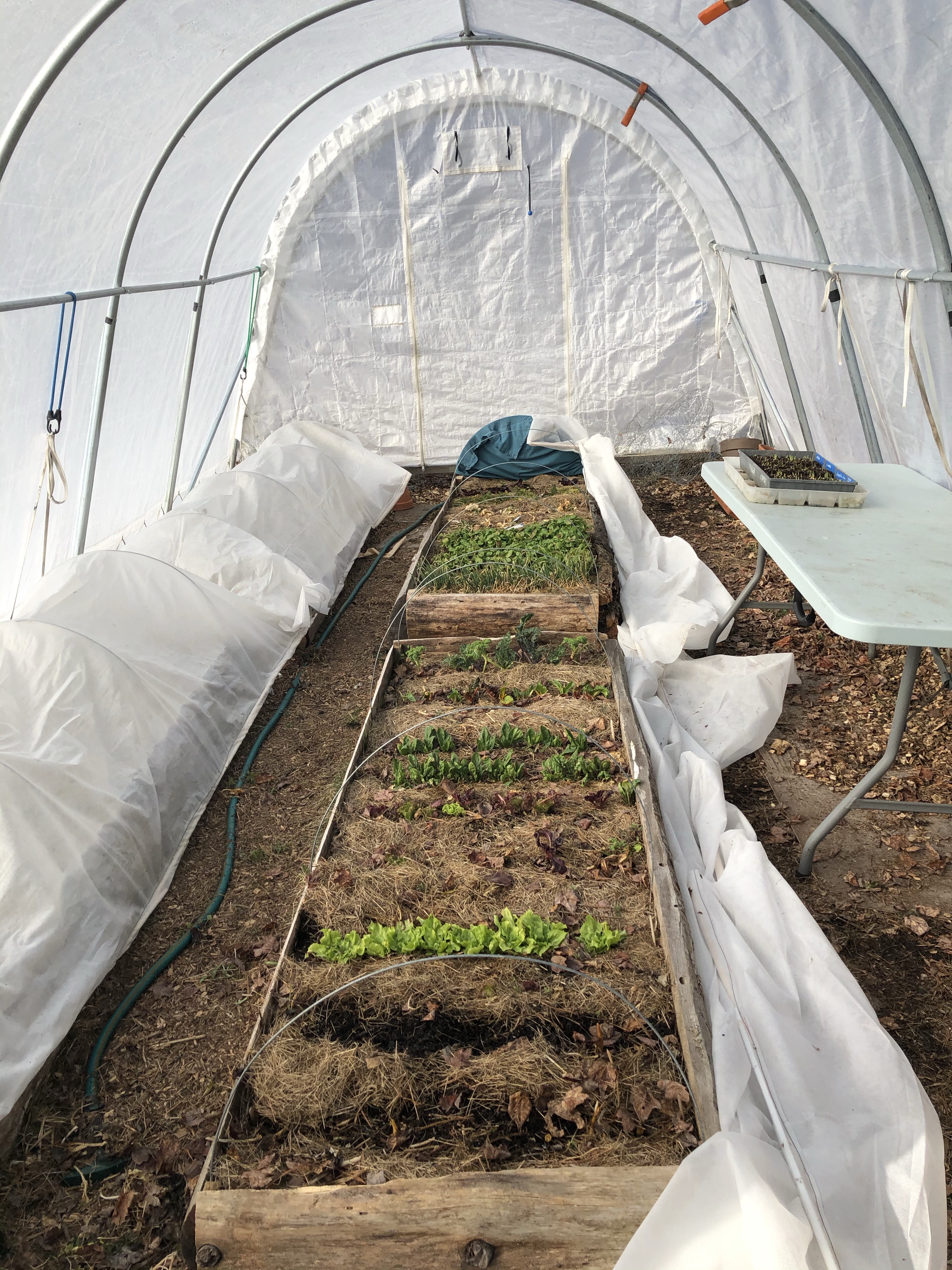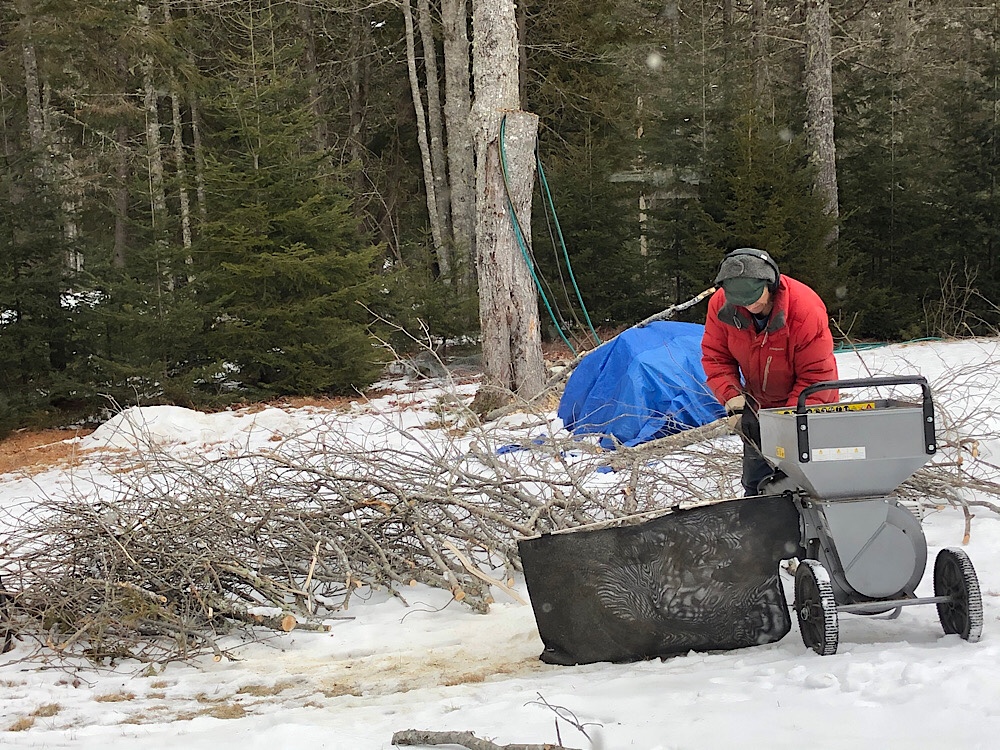Snow was predicted earlier, but the forecast changed. And indeed we are getting rain, rain, and more rain and strong winds. A real snow melter.

I thought it would be pleasant enough sheltered in the hoophouse but the temperature was somewhere in the 30’s and my hands became numb almost immediately.
Nevertheless I planted some arugula, Salanova lettuce, and tatsoi in some of the empty rows in the hoophouse. Sam watered them in with the hose. Now we are warming up inside.
Chickens have started laying again, sporadically.

